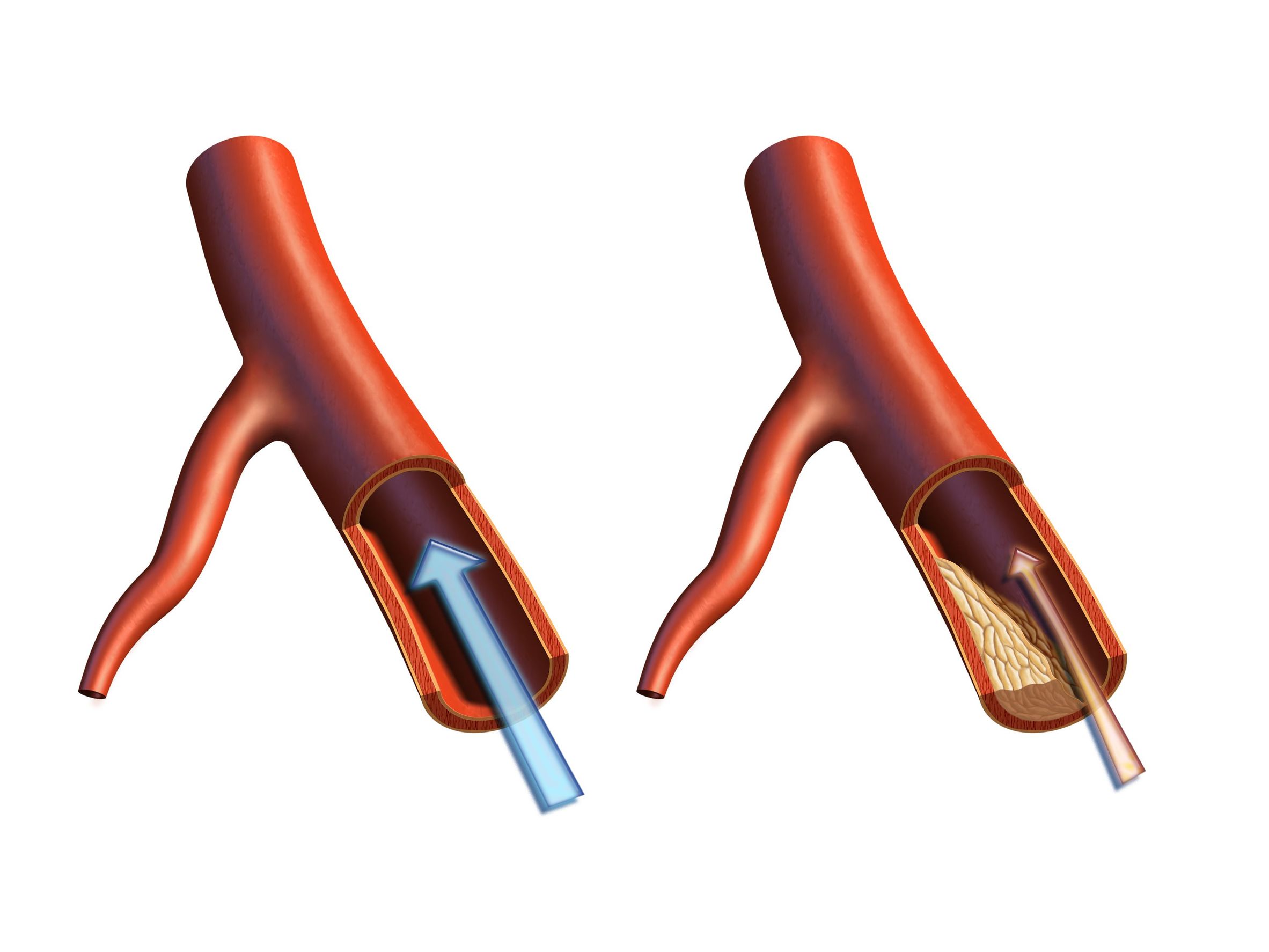Higher coronary artery calcium levels in middle-age were associated with structural heart abnormalities linked to future heart failure, particularly among blacks, according to new research in Circulation: Cardiovascular Imaging, an American Heart Association journal.
Coronary artery calcium (CAC) is a risk marker for heart health problems
Coronary artery calcium (CAC) is the buildup of calcified plaque made up of fat, calcium and cholesterol. The calcium found in this type of plaque is not related to dietary calcium. Elevated cholesterol levels in the blood can contribute to plaque buildup, known as atherosclerosis, which narrows the channel within an artery and reduces blood flow.
CAC is a risk marker for heart health problems, and CAC screening was added to the American Heart Association’s 2018 cholesterol management guidelines to further improve early detection of heart health abnormalities, especially among people who might be at a higher risk. A CAC score of zero indicates there is low risk in the absence of other high-risk conditions, while a score above zero indicates increasing risk.
Researchers tracked 2,449 people in this study
In this study, researchers tracked 2,449 people (52% white, 57% women) from young adulthood to middle-age. Non-invasive computed tomography imaging tests were used to gauge the participants’ vascular health, with participants’ imaging tests and CAC scores compared at years 15 and 25 of the study period.
By year 25 of the study
By year 25, participants’ average age was about 50. Seventy-two percent of the group had a CAC score of zero compared with 77% a decade earlier.
“We looked at early adulthood to middle-age because this is a window in which we can see abnormalities that might not be causing symptoms, but could later increase the risk of heart problems. Prevention and control of these abnormalities are key, so early identification of risks can be crucial,” said Henrique Turin Moreira, M.D., Ph.D., study co-author and an attending physician at Hospital das Clínicas de Ribeirão Preto at the University of São Paulo in Brazil
The findings
Moreira and team found that increases in CAC scores were independently related to increasing age, male sex, black race, higher systolic blood pressure, higher total cholesterol, diabetes mellitus and current smoking, as well as the use of medications to lower blood pressure and cholesterol.
Additionally, they found:
- Compared with patients who had CAC scores of zero, those who had higher CAC scores at middle-age had a 12% increase in left ventricular mass and a 9% increase in left ventricular volume, independent of other risk factors including demographic information and cardiovascular risks. Abnormalities in the left ventricle means the heart had to work harder to effectively pump blood, and as a result, became enlarged and thickened, a risk factor for heart failure.
- These findings were even more significant among blacks. For every one-unit change in a CAC score, blacks had four times higher increase in left ventricular mass compared with whites.
- While progression in CAC over the follow-up was strongly related to higher left ventricular mass in blacks, this relationship was not significant in whites.
Blacks already face a greater risk and burden of heart disease and stroke: 60% of adult black men and 57% of adult black women have some form of cardiovascular disease, compared with 50% of white men and 43% of white women.
Racial differences in findings may be due to genetic factors
“Racial differences in our findings may be due to genetic factors or perhaps greater exposure to cardiovascular risk factors that usually appear earlier in blacks,” Moreira said. “We need more research to examine the link between coronary artery calcium and heart health.”
“Prior studies have shown that presence of CAC and higher CAC scores are associated with atherosclerotic cardiovascular disease in young to middle aged adults. The results of this study are important as they highlight that presence of CAC and higher CAC scores may also be associated with echocardiographic markers of subclinical LV systolic and diastolic dysfunction,” said Salim Virani, M.D., a member of the writing committee for the American Heart Association’s 2018 cholesterol guidelines and director of the Cardiology Fellowship Training Program at Baylor College of Medicine in Houston. “Given the burden of morbidity and mortality associated with heart failure, these are important findings. Prior studies from this cohort have also shown that a better risk factors profile in young adulthood is associated with much lower CAC and therefore, these results further highlight the importance of primordial prevention and risk factor modification in early adulthood.”
Source:
- Moreira, H.T. et al. (2019) Coronary Artery Calcium From Early Adulthood to Middle Age and Left Ventricular Structure and Function. Circulation: Cardiovascular Imaging. doi.org/10.1161/CIRCIMAGING.119.009228.
 Razi Berry is the founder and publisher of the journal Naturopathic Doctor News & Review, which has been in print since 2005, and the premier consumer-faced website of naturopathic medicine, NaturalPath. She is the host of The Natural Cancer Prevention Summit and The Heart Revolution-Heal, Empower and Follow Your Heart, and the popular 10 week Sugar Free Summer program. From a near death experience as a young girl that healed her failing heart, to later overcoming infertility and Chronic Fatigue Syndrome and Fibromyalgia through naturopathic medicine, Razi has lived the mind/body healing paradigm. Her projects uniquely capture the tradition and philosophy of naturopathy: The healing power of nature, the vital life force in every living thing and the undeniable role that science and mind/body medicine have in creating health and overcoming dis-ease. Follow Razi on Facebook at Razi Berry and join us at Love is Medicine to explore the convergence of love and health.
Razi Berry is the founder and publisher of the journal Naturopathic Doctor News & Review, which has been in print since 2005, and the premier consumer-faced website of naturopathic medicine, NaturalPath. She is the host of The Natural Cancer Prevention Summit and The Heart Revolution-Heal, Empower and Follow Your Heart, and the popular 10 week Sugar Free Summer program. From a near death experience as a young girl that healed her failing heart, to later overcoming infertility and Chronic Fatigue Syndrome and Fibromyalgia through naturopathic medicine, Razi has lived the mind/body healing paradigm. Her projects uniquely capture the tradition and philosophy of naturopathy: The healing power of nature, the vital life force in every living thing and the undeniable role that science and mind/body medicine have in creating health and overcoming dis-ease. Follow Razi on Facebook at Razi Berry and join us at Love is Medicine to explore the convergence of love and health.




